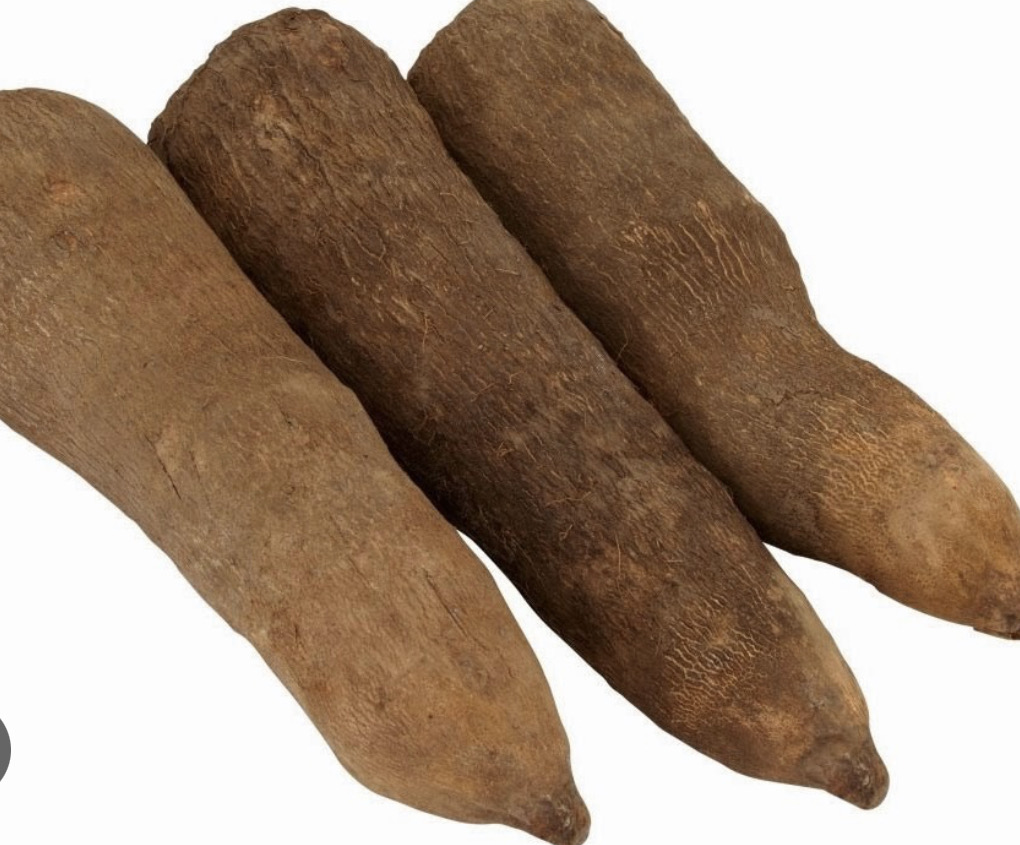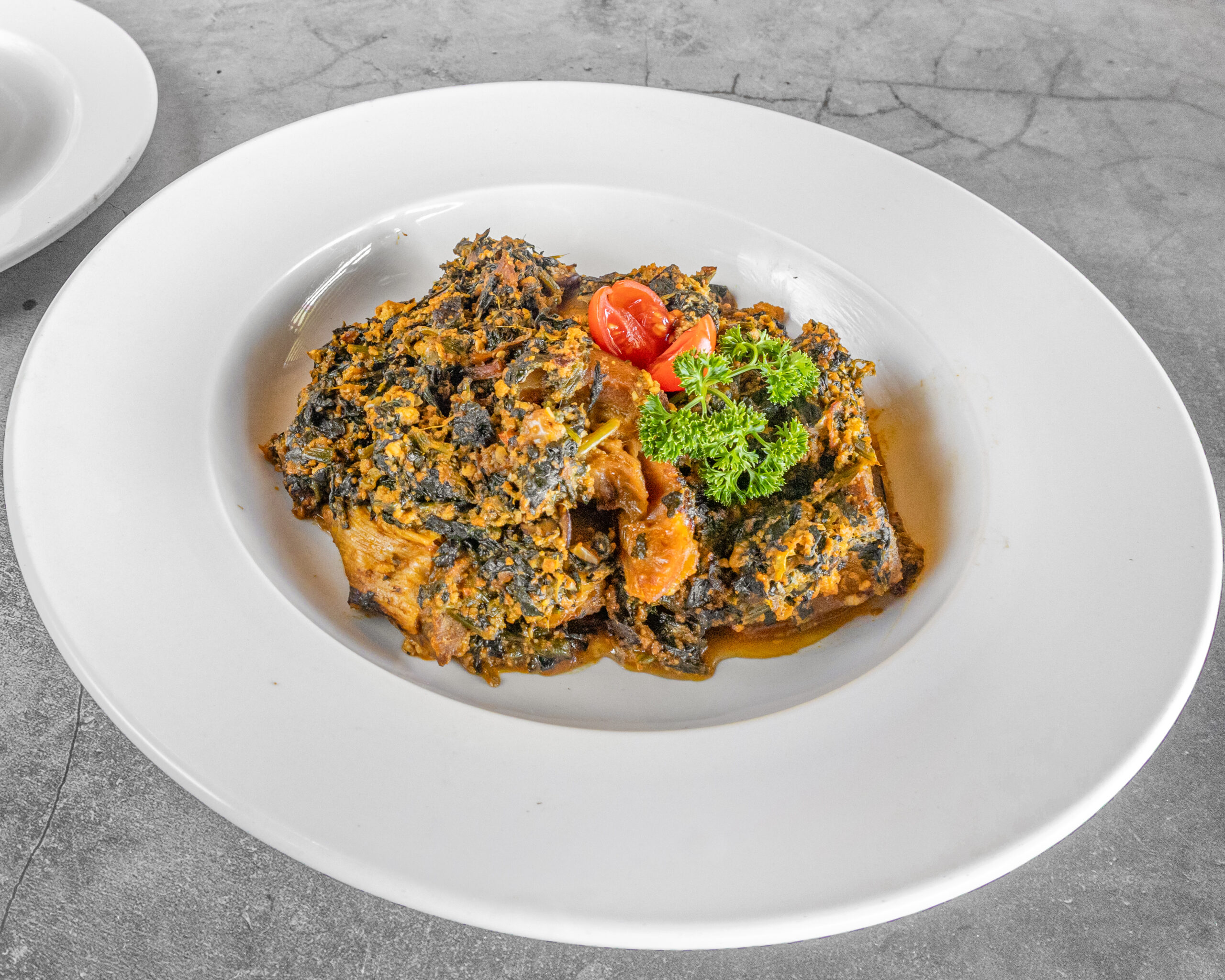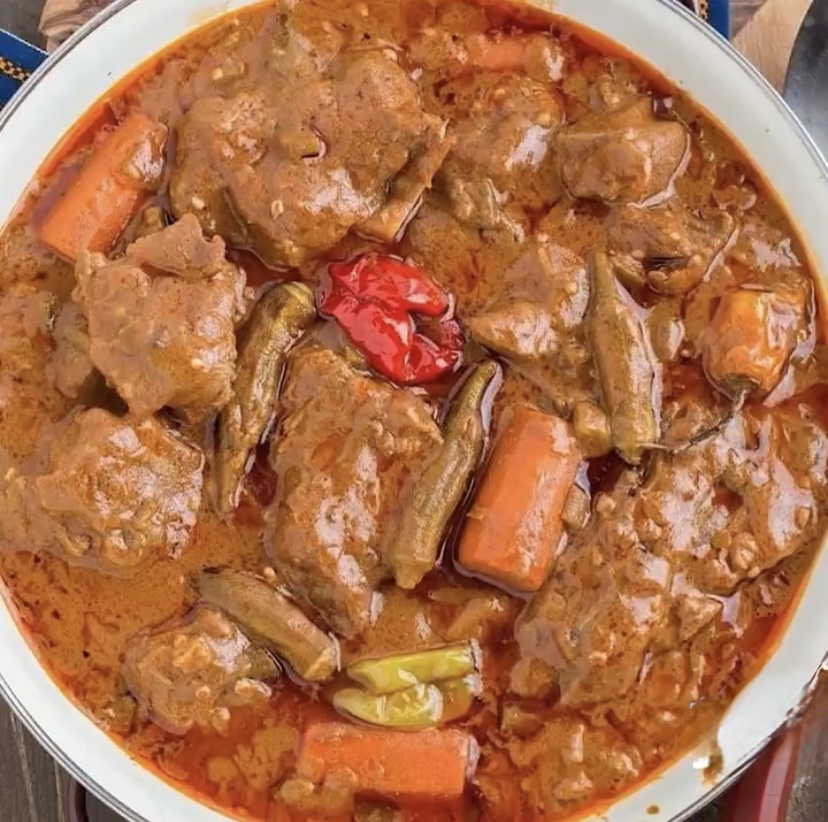
Egusi Stew – A Nutty and Flavorful African Delight

Egusi stew is a staple in many West African homes, made from ground melon seeds that create a thick, nutty, and delicious sauce. Packed with protein and combined with vegetables, spices, and either fish or meat, this stew is a must-try! Learn how to make the perfect Egusi stew with simple ingredients and traditional cooking techniques.
A Brief History of Egusi Stew and Why the World Loves It
Growing up as an Ivorian, I was surrounded by the rich flavors of my own cultural foods. But it wasn’t until my 20s, when I started dating my husband, that I truly discovered the magic of egusi stew. It was a customary dish in his culture, and through him, I was introduced to its bold flavors and rich textures. The boldness, the spice, the depth of flavor-it was love at first bite. It reminded me of home, yet it was so different. I had never encountered iru (fermented locust beans) or egusi (melon seeds) before, and they completely changed the way I saw West African cuisine.
A Brief History of Egusi Stew
Egusi stew is a staple in West African cooking, particularly in Nigeria and Ghana. It’s made from ground melon seeds, which give it a rich, creamy texture. The dish has been around for generations, passed down from ancestors who perfected the art of using local ingredients to create nourishing, flavorful meals. Traditionally, egusi stew is served with fufu, pounded yam, or rice, making it a hearty, comforting dish that brings people together.
Why Egusi Stew is Loved Worldwide
Over the years, egusi stew has gained a global fan base, and it’s easy to see why: Rich and Creamy Texture – The ground melon seeds create a thick, hearty consistency that’s both satisfying and comforting. Bold, Complex Flavors – The combination of iru, palm oil, spices, and leafy greens makes every bite an experience. Nutritional Benefits – Egusi is packed with protein, healthy fats, and essential vitamins, making it both delicious and nourishing. Versatility – Whether you eat it with beef, goat, fish, or keep it plant-based, there’s a version of egusi stew for everyone. A Taste of Home – For those in the diaspora, egusi stew is more than just food-it’s a connection to heritage and tradition.
My Go-To Egusi Stew Recipe
When I first tried egusi, I had to learn how to make it myself. After a few tweaks and lots of taste-testing, this is the recipe that stuck:
Ingredients:
- cup egusi (ground melon seeds)
- 1/2 cup palm oil
- 1 medium red onion (chopped, or any onion of your choice)
- 2-3 cups meat or fish (beef, goat, smoked fish, or a mix)
- 2 cups spinach, collard greens, or bitter leaf (washed and chopped)
- 2 tomatoes (blended)
- 1 red bell pepper (blended)
- 1-2 Scotch bonnet peppers (blended, adjust for spice preference)
- 2 cups meat stock or water
- 1 tablespoon ground crayfish (optional)
- 1 tablespoon iru (fermented locust beans)
- 2 bouillon cubes (optional)
- Salt to taste
Instructions:
Heat the palm oil in a large pot over medium heat. Add chopped onions and sauté until translucent. Add the blended tomatoes, red bell pepper, and Scotch bonnet peppers. Stir well and cook for about 10-15 minutes until the sauce thickens and the oil starts to separate. Add the meat or fish, along with the meat stock or water. Stir and let it simmer for another 10 minutes Mix the ground egusi with a little water to form a thick paste, then drop spoonfuls of it into the pot. Stir gently to distribute evenly. Add crayfish, iru, bouillon cubes, and salt to taste. Cover and let simmer for another 10 minutes to allow the flavors to meld. Stir in the chopped spinach or bitter leaf and cook for an additional 5 minutes. Serve hot with pounded yam, fufu, rice, or eba. Enjoy!
Final Thoughts
Egusi stew isn’t just food-it’s an experience. It’s a dish that tells a story, one of tradition, adaptation, and love. Whether you grew up eating egusi or, like me, discovered it later in life, it’s one of those meals that sticks with you. If you haven’t tried it yet, this is your sign to dive in!

